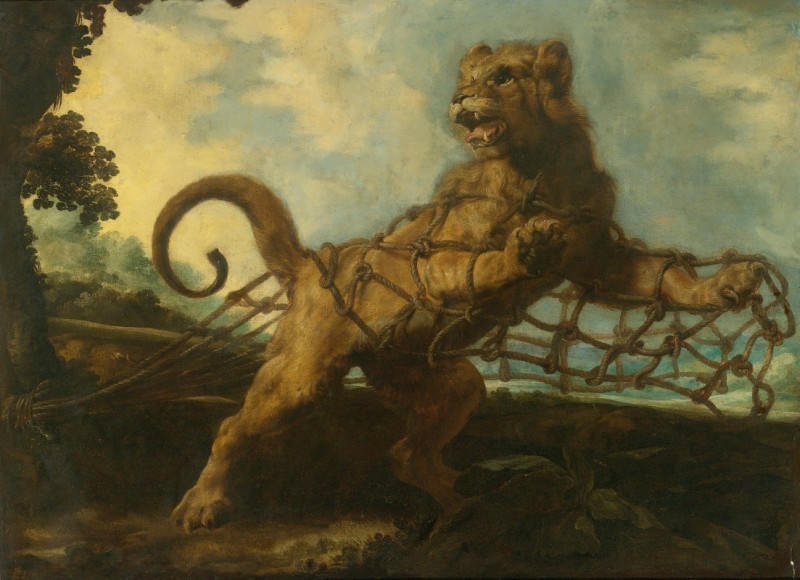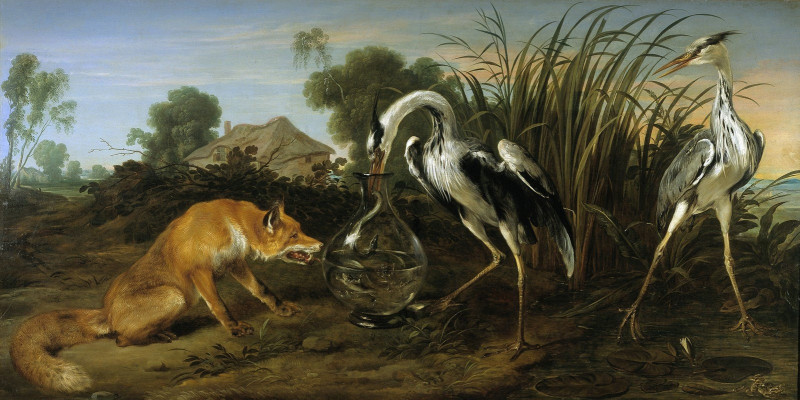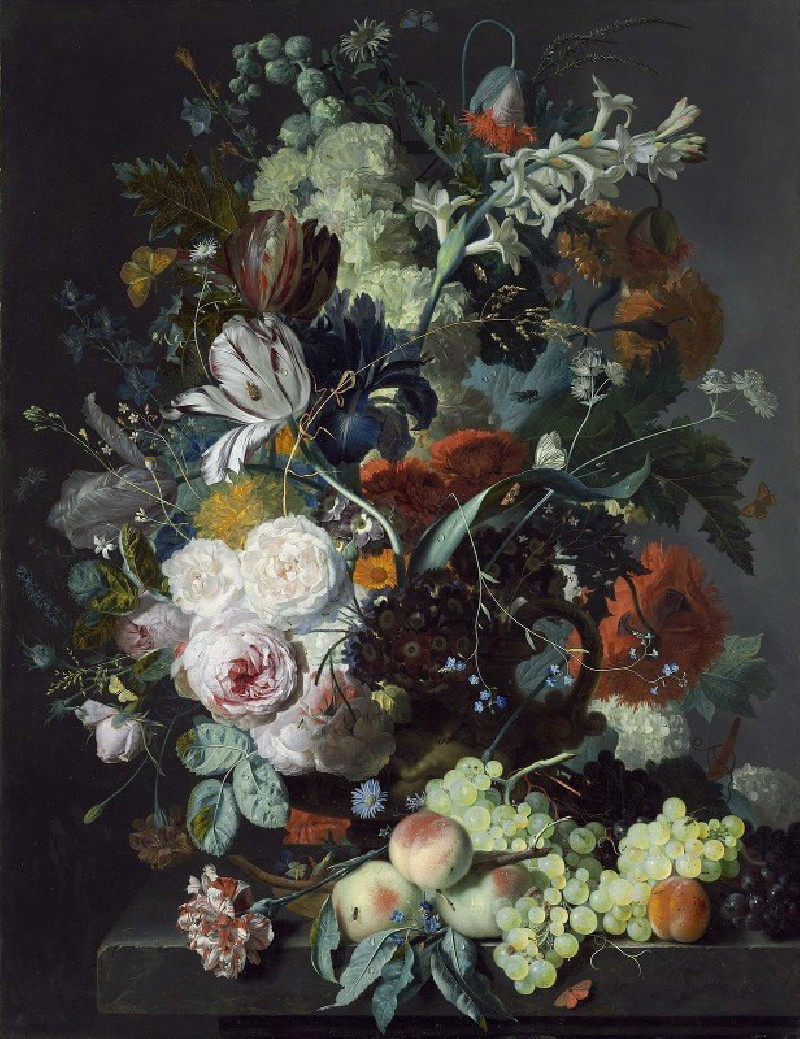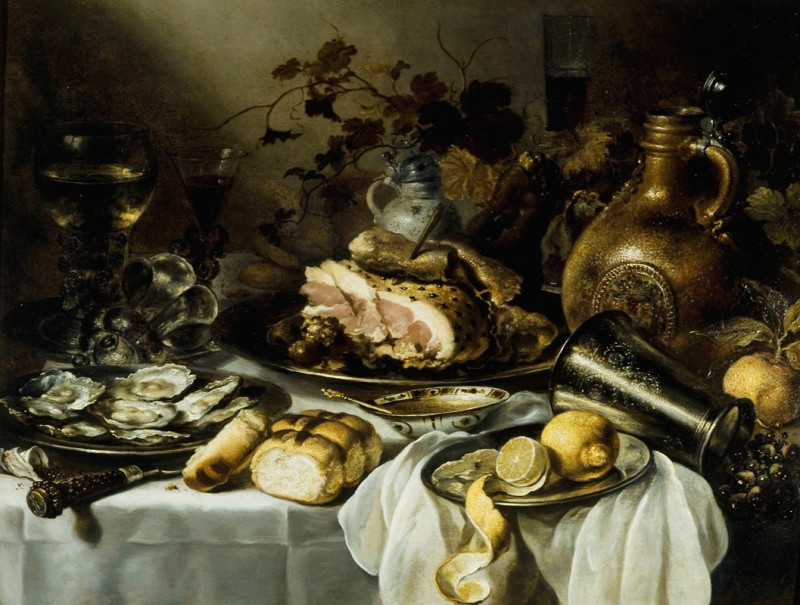Kitchen Still Life with a Maid and Young Boy (mid-17th century)
Technique: Giclée quality print
Recommended by our customers
More about this artwork
Dive into the 17th-century with Frans Snyders' vivid tableau, "Kitchen Still Life with a Maid and Young Boy." This painting, rich in detail and color, showcases Snyders' mastery in rendering both baroque still life and human figures, tellingly capturing the abundance and vibrancy of a prosperous kitchen scene.The artwork is divided into several focal points: the assortment of fresh produce and dead game that illustrates the bounteous nature of the setting; the figures of a maid and a young boy, suggesting domestic life and human interaction; and the presence of pets, adding a layer of lively contrast to the inanimate objects.At the center, a maid and a young boy engage in a dynamic scene. The maid, dressed in a period grey bodice and a striking red skirt, stands beside a table heaped with an opulent spread of fruit and game. She directs her attention towards the young boy, who, clothed in a rustic red jersey and hat, reaches excitedly towards a bunch of grapes, maintaining a playful interaction within the kitchen's daily routine.The surrounding space is a marvel of still life elements: a variety of fruits, including grapes, peaches, and berries, along with a lavish display of game, such as hares and fowl, are rendered with textural detail that highlights Snyders' skill in still life painting. A dog and cat, attentively positioned, enhance the narrative and the evident divide between the domestic and the wild."Kitchen Still Life with a Maid and Young Boy" not only represents an everyday scene with anthropological precision but also serves as a showcase of the era's affluent food culture and social hierarchy.
Delivery
Returns
Frans Snyders or Frans Snijders (11 November 1579, Antwerp – 19 August 1657, Antwerp) was a Flemish painter of animals, hunting scenes, market scenes, and still lifes. He was one of the earliest specialist animaliers and he is credited with initiating a wide variety of new still-life and animal subjects in Antwerp. He was a regular collaborator with leading Antwerp painters such as Peter Paul Rubens, Anthony van Dyck, and Jacob Jordaens.

































